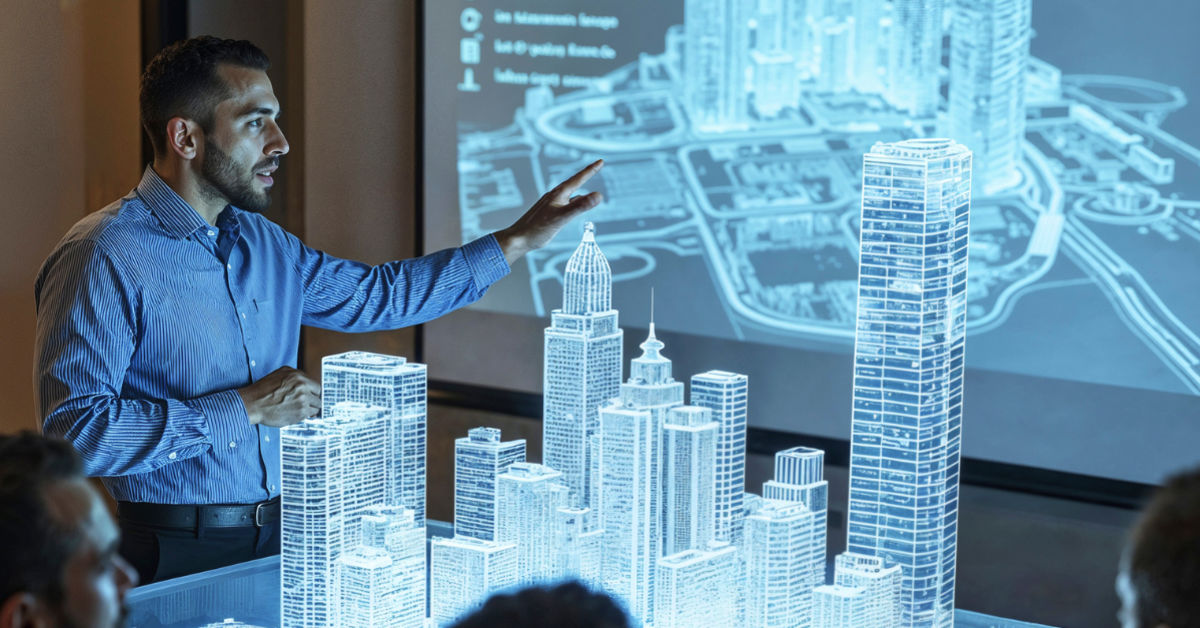The world of architecture and construction is undergoing a digital renaissance, and leading that evolution is Vitrus. More than a software platform, Vitrus is a technological catalyst redefining how buildings are designed, engineered, and brought to life. Leveraging multi-modal artificial intelligence, it combines data, visuals, language, and 3D intelligence to enhance every stage of the construction lifecycle.
In this in-depth guide, we explore what makes Vitrus unique, how it is disrupting traditional workflows, and why architects, engineers, and project managers are rapidly adopting it to build smarter, faster, and more efficiently.
What Is Vitrus?
Vitrus is a multi-modal AI platform specifically tailored for the architecture, engineering, and construction (AEC) industry. It blends advanced technologies like computer vision, natural language processing, generative design, and predictive analytics to automate and enhance complex tasks in building design and project planning.
Unlike traditional tools that focus on individual phases, Vitrus provides a connected ecosystem that interprets various data types simultaneously—blueprints, voice commands, visual inputs, geospatial data, and even real-time construction site feeds. This integration allows professionals to make data-backed decisions with unmatched speed and precision.
Why Vitrus Matters in 2025 and Beyond
The AEC industry has long struggled with inefficiencies—from miscommunication to budget overruns. Vitru’s offers a solution by unifying design, collaboration, and execution in a single intelligent system.
Key Benefits:
- Reduces project delays through real-time issue detection
- Enhances communication between design teams, contractors, and clients
- Boosts design creativity using generative AI tools
- Improves site safety and compliance tracking
- Enables sustainable building practices with smart material insights
By embedding AI into every layer of project delivery, Vitru’s isn’t just supporting innovation—it’s enabling a fundamental shift in how the built environment comes to life.
Core Features of the Vitrus Platform
To understand the full impact of Vitru’s, it’s helpful to break down its components. Here’s a detailed look at the platform’s primary capabilities:
Table: Vitrus Multi-Modal AI Feature Breakdown
| Feature | Description | Real-World Benefit |
| AI-Powered Design Assistant | Uses generative design models to draft floorplans, elevations, and concepts | Cuts design time by 60% |
| Visual Recognition Engine | Interprets blueprints, 3D models, and on-site images | Detects inconsistencies before construction |
| Natural Language Interface | Allows voice and text input to control tools and access documents | Enhances accessibility and workflow speed |
| Predictive Analytics Module | Analyzes historical data for cost estimation and risk prediction | Prevents budget overruns and scheduling delays |
| Real-Time Collaboration Hub | Centralizes stakeholder communication across disciplines | Reduces miscommunication and rework |
| Sustainability Analyzer | Evaluates material and energy choices for eco-efficiency | Supports green building certifications |
Use Cases: How Professionals Use Vitrus
Vitrus is reshaping roles across the AEC ecosystem. Here’s how different users interact with the platform:
For Architects
- Quickly generate design iterations using parametric inputs
- Collaborate with clients in real-time on spatial changes
- Visualize structural behavior through simulation tools
For Engineers
- Run AI-based structural analysis
- Optimize materials selection based on sustainability and cost
- Identify compliance issues early using building code integrations
For Contractors
- Access construction documents via voice commands
- Use drone-captured images for site comparison with digital twins
- Monitor progress and detect errors using image recognition
For Project Managers
- Use dashboards for cost and timeline tracking
- Generate reports using real-time site and model data
- Collaborate with stakeholders using version-controlled documents
Real-World Impact: Vitrus in Action
Let’s look at a few case studies where Vitrus has made a measurable difference.
Case Study 1: Urban Housing Project in Berlin
A mid-rise housing project saved 18% on total costs by using Vitrus’ predictive budgeting and material optimization. The AI design assistant helped iterate layouts, meeting both code and community requirements in half the usual design time.
Case Study 2: Green School Campus in Oregon
Vitrus’ sustainability analyzer guided the team toward passive design features and renewable materials. As a result, the project achieved LEED Platinum status with a 20% reduction in embodied carbon.
Case Study 3: Commercial Renovation in Tokyo
Using the visual recognition engine, the renovation team detected outdated wiring and structural misalignments before demolition, saving $75,000 in rework and preventing safety hazards.
How Vitrus Integrates with Existing Workflows
One of the platform’s strongest suits is its compatibility. Vitrus doesn’t force firms to abandon their existing tools. Instead, it integrates smoothly with popular industry software:
- BIM platforms like Autodesk Revit, ArchiCAD
- CAD tools including AutoCAD and Rhino
- Project management tools like Procore and Asana
- Construction site hardware including drones, sensors, and smart helmets
With robust APIs and cloud-based deployment, teams can scale usage as needed—from individual users to enterprise-wide implementation.
Future-Proofing the Built Environment
With regulations around sustainability and safety evolving quickly, AEC professionals need tools that adapt. Vitrus is built to grow alongside industry changes. Here are some innovations on its roadmap:
- Integration with climate modeling for resilient design
- AI ethics modules for unbiased data use
- Carbon tracking APIs to monitor emissions throughout the lifecycle
- Expanded language support for global deployment
As cities expand and the need for sustainable, efficient infrastructure grows, platforms like Vitrus are not just helpful—they’re essential.
Common Challenges Vitrus Solves
| Challenge | How Vitrus Helps |
| Time-consuming manual drafting | Automates with generative design tools |
| Miscommunication across teams | Centralizes updates and communications |
| Material waste and inefficiency | Suggests optimal quantities through AI predictions |
| Safety compliance oversights | Monitors in real-time using visual and data analysis |
| Sustainability reporting difficulties | Provides instant metrics on energy and material impact |
Why Vitrus Is a Game-Changer in Construction Technology
In the fast-paced world of construction and architecture, staying ahead means embracing intelligent, integrated platforms. Vitrus empowers teams to move beyond traditional constraints—streamlining everything from ideation to ribbon-cutting.
By adopting Vitrus, professionals gain:
- Faster, smarter design iterations
- Safer, more compliant project execution
- Clear communication across disciplines
- Accurate, AI-informed budgeting
- Competitive advantage in green building standards
With its multi-modal capabilities, Vitrus isn’t just changing how buildings are made—it’s redefining how the industry thinks.
Conclusion
Vitrus represents a leap forward in the digital transformation of the AEC industry. By combining the power of multi-modal AI with real-world needs, it delivers an unmatched experience that saves time, reduces costs, and fosters creativity.
Whether you’re designing the next skyscraper, renovating a campus, or planning urban infrastructure, Vitrus helps you do it smarter. It’s not just software—it’s a partner in shaping the future of the built environment.
Frequently Asked Questions (FAQ)
Is Vitrus only for large firms?
Not at all. Vitrus is scalable for small studios, mid-size practices, and large enterprises alike. Flexible licensing makes it accessible to teams of any size.
Can Vitrus replace traditional design software?
Vitrus works alongside your existing software. It enhances productivity and insight without disrupting your current tools or workflows.
How secure is the data on Vitrus?
The platform uses enterprise-grade encryption, role-based access, and multi-factor authentication to ensure data integrity and security.
Is there a steep learning curve?
Vitrus is designed with usability in mind. Most users become proficient within one week, and dedicated onboarding support is provided.
Does it support sustainable design?
Yes. Vitrus actively promotes sustainable decision-making by analyzing carbon impacts, energy efficiency, and green certification readiness.







